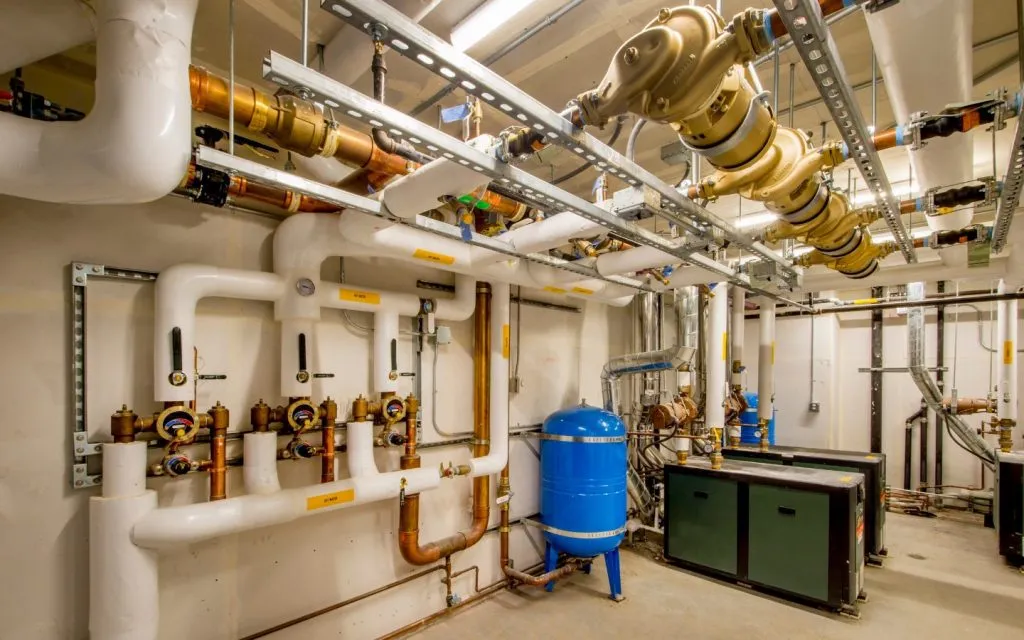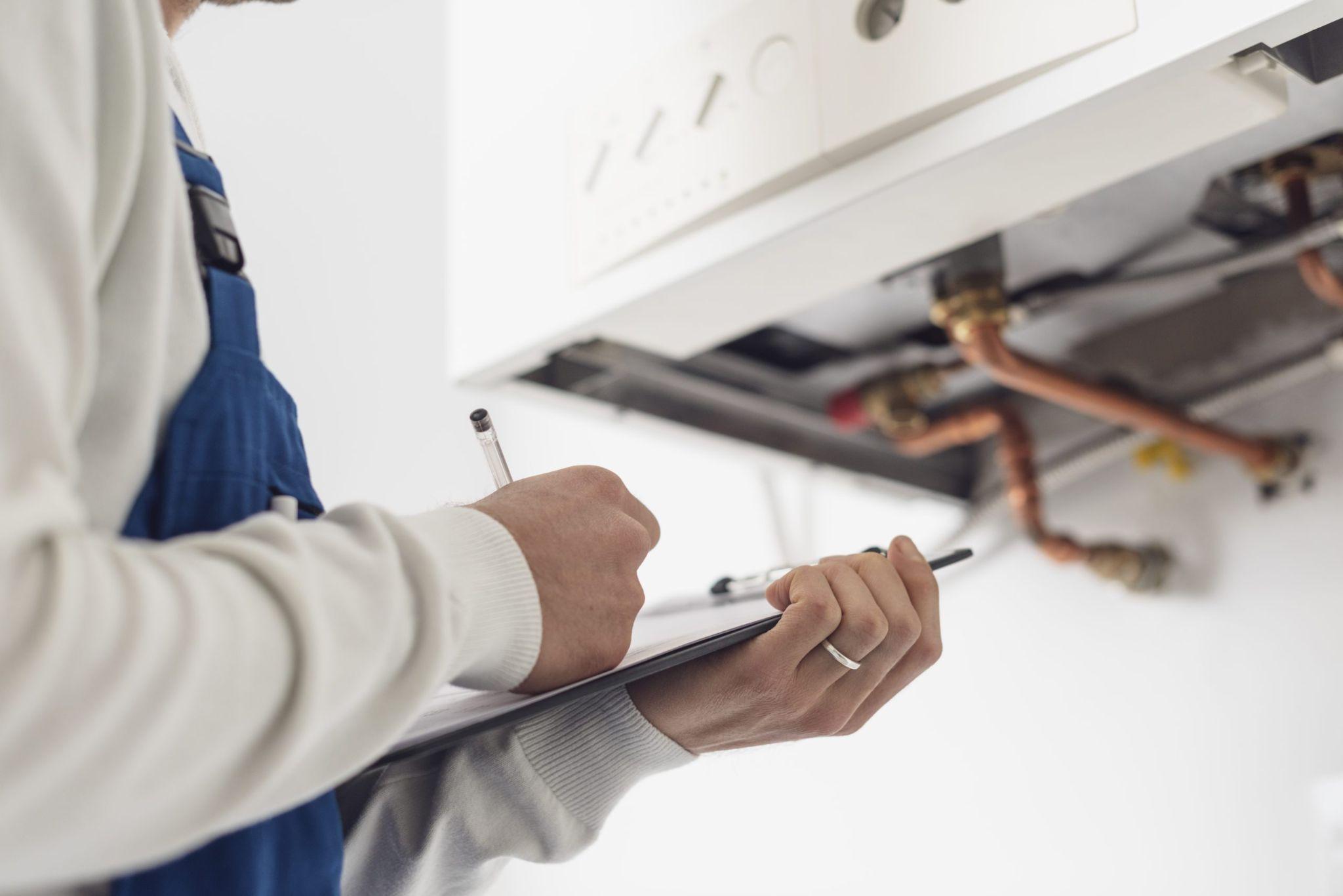Learning
Top 10 Prototype of PCB Manufacturing and Assembly Suppliers in the World

Rapid prototyping and small-batch manufacturing of printed circuit boards (PCBs) is critical for validating electronic designs before investing in volume production. Choosing a competent prototype partner enables building quality boards quickly while allowing easy design iterations.
This article provides a rundown of the top global PCB suppliers with strong capabilities for low-to-mid volume fabrication and assembly needs of makers, startups and electronics engineers.
Evaluation Criteria
What distinguishes an exceptional PCB prototype source? Here are some key assessment parameters:
- Technical Prowess: Ability to manufacture complex board types – HDI, Rigid-Flex etc along with standard capabilities for quickturns, SMT assembly, functional testing, inspection etc.
- Quality & Reliability: Consistent production quality with robust process controls and quality management certifications
- Cost effectiveness: Competitive and flexible pricing models for low volume batches
- Customer service: Responsive sales and engineering support for design feedback, DFM analysis etc.
- Supply chain management: Inventory, sourcing and production transparency with order tracking and logistics
- Production scale & locations: Infrastructure scale, manufacturing locations and global reach
With those criteria in mind, below are 10 of the most capable PCB prototyping partners that excel on technology, quality, service and value.
1. RayPCB
Locations: China
Founded in 2005, RayPCB provides 2–14 day delivery of prototype through medium-sized batches with rigorous quality control. Their flexible order sizes starting at 5 pieces make the company popular for verifying electronic products before mass production.
Core capabilities:
- 2 to 6 layer boards upto 16mil line/space
- SMT Assembly with AOI testing
- Engineer support for DFM improvement
- IPC standards compliance
RayPCB serves startups & SMEs across industrial, automotive, medical, and consumer electronics verticals. Headquartered in China with production bases in Shenzhen and Changping, they deliver small orders economically across Asia, EU and Americas.
2. Advanced Circuits
Location: Colorado, USA
Offering advanced domestic capabilities, Advanced Circuits manufactures PCB quantities from 1 to 1,000+ in as little as 24 hours. Their slogan “the prototype PCB manufacturer” highlights a strong focus on low volume, quickturn fabrication targeted at inventors, startups and engineers.
Core capabilities:
- 2 to 12 layer Count PCBs with trace/space down to 4/4 mils
- Lead-free SMT assembly
- Design analysis on request
- UL quality certifications
Serving over 100,000 customers across IT, industrial, medical and aerospace sectors, Advanced Circuits provides a complete prototype solution from engineering support to supply chain services. Their online Instant Quote Engine delivers fast quoting and ordering experience.
3. Elmatica
Locations: Norway, Poland, China
Elmatica is a favored Scandinavian PCB producer providing advanced technology, quality and supply chain transparency across their global facilities.
Core capabilities:
- High mix/low volume manufacturing
- SMT assembly with functional testing
- Engineering support on demand
- Environmental compliance
They offer optimized cycle times at competitive rates delivered reliably in small quantities, winning customers in the automotive, industrial, telecom and renewable energy sectors. Given strict European environmental regulations around electronics waste, their Green Partner program helps customers design and build sustainable PCB products.
4. JLCPCB
Locations: China
Arguably the industry price leader, JLCPCB can supply affordable prototypes and low-mid quantity boards thanks to massive volumes and vertically integrated capabilities.
Core capabilities:
- 2 to 6 layer PCBs
- Lead-free SMT Assembly
- UL & ISO quality standards
- High mix, low volume focus
Easy online ordering, low minimums starting at 5 boards and $2 pricing has won this Shenzhen company numerous loyal customers. If balancing quality against costs for proof-of-concept builds, JLCPCB delivers.
5. Sunstone Circuits
Locations: California, USA
Sunstone Circuits specializes in 24 to 72 hour fast turnaround of prototype through medium volumes using domestic US facilities for quicker delivery.
Core capabilities:
- 2 to 16 layer boards with 4mil resolution
- SMT assembly for both leaded and lead-free components
- IATF 16949 quality certification
- Engineering support like DFM analysis
Their Sketch-to-Scale service assists with idea conceptualization to first prototype builds making Sunstone popular for proof-of-concept validations. Focus verticals include aerospace, defense, industrial and medical products.
6. Seeed Studio
Locations: China
Trusted among open hardware communities, Seeed Studio offers both in-house and partner manufacturing services for PCB fabrication and assembly targeted at makers & engineers.
Core capabilities:
- 2 to 6 layer boards with 10mil resolution
- SMT Assembly with functional test options
- Small MOQ starting 5 boards
- Supply chain transparency
Seeed provides the rapid prototyping infrastructure to support developers working on open source hardware products and sensor devices leveraging platforms like Arduino and Raspberry Pi. Their Grove connector system allows plugging sensors and modules into development boards quicker. Beyond manufacturing services, they also operate the Seeed Fusion PCB design software and OpenParts component library.
7. PCBWAY
Locations: China
This Chinese fabricator offers low-cost, high-mix pooling of small-batch orders across a global client base by tightly integrating design, fabrication and assembly. Their web platform enables transparent quoting and order tracking.
Core capabilities:
- 2 to 6 layer PCBs
- SMT assembly
- Functional testing
- Stencil fabrication
- 5 boards minimum order
Catering to startups and electronics hobbyists, PCBWay has easy online processes for uploading from various CAD tools and component libraries. They have carved a niche for supporting low-mid volume production at competitive rates.
8. EuroCircuits
Locations: Europe (Austria, Slovakia)
Part of the AT&S group, Eurocircuits operates advanced PCB and SMT assembly lines across multiple European locations to cater to regional prototyping and NPI requirements speedily.
Core capabilities:
- High density PCBs up to 32 layers
- 3-5 days standard delivery
- Optical inspection and testing
- Prototyping, NPI and ramp-up
- SMT Assembly with implantation
With demanding automobile and industrial customers in Europe, they offer both feature-rich and cost-effective solutions for bringing ideas to functional form quickly via well-built prototypes before wider releases.
9. ALLPCB
Locations: China
Specializing in super quick turnaround of affordable prototypes, ALLPCB offers 24 to 72 hour fabrication of up to 6 layer boards for engineers seeking basic validation builds.
Core capabilities:
- 2 to 6 layer boards
- Minimum 2 pieces order
- Fast tech support response
- SMT Assembly optional
- Low NRE charges
Leveraging Chinese supply chains for sourcing components, PCBs from ALLPCB prove cost efficient for concept testing simple products across consumer electronics, IoT devices or educational robotics. Their online quoting tools make it easy.
10. HillmanuCurtis
Locations: China
Rounding off the list is Hillmancurtis , another Chinese prototype shop which offers mass-production style processing to ensure quality. They serve startups through large enterprises helping scale idea testing.
Core capabilities:
- 2 to 32 layercount PCBs, some HDI
- SMT Assembly with functional test
- Engineering support on demand
- IATF 16949 quality certification
- 5 day standard delivery
Positioned as a “One-Stop” shop, HillmanuCurtis supports various downstream fabrication steps like sourcing components, stencils, enclosures etc needed alongside core PCB capabilities. Building trust around quality allows them to offer affordable low volumes vital for prototype iterations.
Comparing PCB Prototype Shops
While above listing provides a sampling of top global PCB prototypers across quality, cost and delivery benchmarks, many other regional specialty firms exist worldwide.
Testing out a few PCB fabrication and assembly partners on initial projects is recommended to gauge responsiveness, quality and compatibility.
Below table captures some differentiation across few shortlisted vendors:
SupplierLocationsCore FocusNotesRayPCBColorado, USA24 hour domestic quickturnsAdvanced tech for defense, industrialElmaticaNorway, Poland, ChinaHigh-quality, transparent supply chainGreen certificationsAdvanced CircuitsColorado, USAStartup friendly flexible batchesDFM support, fast quotesJLCPCBChinaAffordable prices driven by volumesPortal makes ordering easySunstone CircuitsCalifornia, USADesign support with fastturnsITAR compliance for defense workSeeed StudioChinaOpen-source community orientedGrove connectors ecosystemPCBWayChinaLow-cost multi-quantity batchesIntegrates design to assemblyEurocircuitsEuropeQuality boards catering to EUAutomotive, industrial customersALLPCBChina24 hour economy prototypingBarebones validation buildsHillmanuCurtis
ChinaMass production-type processingWide technology breadthSelection Criteria
Matching project needs against partner strengths is vital for prototype satisfaction. With platforms enabling easy price discovery and online transactions, procuring from multiple sources is also an option.
Some key considerations when shortlisting PCB prototype partners:
- Technical scope e.g. layer counts, line width etc
- Delivery requirements e.g. 24 hour vs 1 week
- Quality needs e.g. for field testing
- Budgets
- Production region e.g. local vs global
- ITAR or certified compliance needs
- After-sales support
Evaluate above factors specific to each project to pick manufacturers aligned to expectations.
Frequently Asked QuestionsWhat are typical steps in the PCB prototype fabrication process?
A typical sequence includes:
- Submit Gerber design files
- DFM validation by engineers
- Kitting components for SMT
- Fabricating bare PCBs
- SMT assembly soldering components
- Programming and functional test
- QA inspection before shipment
- Delivery with test reports
Reputable prototypers provide full visibility into the project lifecycle.
How many PCB prototype iterations make sense before mass production?
2 to 3 iterations help validate most aspects of the design – form, fit, function holes etc. The first build checks basics work. Subsequent versions allow refining the board layout, components used, compliance factors and other wishlist items during initial testing before freezing the design.
How to reduce costs when ordering PCB assembly prototypes?
Some ways to save on prototype assembly costs include:
- Carefully review BOM to standardize components used
- Set relaxed tolerances allowable in low-risk verification builds
- Use moderately priced suppliers providing value SMT services
- Consider breakout boards to evaluate function before complex integration
- Reuse proven power circuits, MCU sections from previous designs
- Small start with trusted prototyper before allocating bigger budget
Saving time and costs in iterating prototypes requires skill and some practical tricks.
How are PCB prototype suppliers advancing capabilities further?
Emerging trends in further enhancing PCB prototyping services include:
Reduced engineering cycles: Faster quoting through finished boards within 24-48 hours by streamlining flows
Design democratization: Easy to use self-service portals for custom specification selection to design file uploads without expert help
Supply chain integration: Connecting prototypes stage with volume manufacturing providers for easier production ramp up
Expanded services: Providing additional services like test jigs, enclosures, certifications etc as bundled offerings
What are key differences in PCB requirements for prototyping vs production?
Prototyping requirements are generally more relaxed than production:
- Lower layer counts acceptable
- Larger features sizes and spaces suffice
- Can skip some fabrication steps like controlled impedance
- Only functional testing not full ICT or x-ray inspection
- Relaxed standards compliance needs
- Lower aesthetic expectations
- Tolerance to rework and hand assembly
The aim with prototypes is demonstrating functional viability before undertaking high-reliability, regulatory compliant releases.
Conclusion
While historically working with prototype PCB manufacturers meant reliability or availability constraints, today’s leaders offer sophisticated technological capabilities rivaling large contractors – just packaged and priced differently.
As an engineer, maker or startup, leveraging such accessible prototyping avenues allows raising confidence in designs before sizable investments in tooling and ramping production. The ability to touch functional boards quickly and iterate on feedback remains vital to transforming ideas into mature products ready for volume markets.
Hope this guide to globally leading PCB prototype sources coupled with best practices helps accelerate your next project.

Learning
First-Time Buyer’s Guide to the UK Property Market

Entering the UK property market as a first-time buyer can feel both exciting and daunting. The process is filled with potential pitfalls and complex decisions, but with the right guidance, it can be navigated smoothly. The estate agents in Yorkshire demystify the journey from the initial decision to buy a home to the moment you step over the threshold of your new property.
Understanding Your Financial Position
The first and perhaps most crucial step in the home-buying process is understanding your financial situation. This includes assessing your savings, income, and current debts. Here’s how you can prepare:
1. Deposit: Generally, you’ll need at least 5% of the property price as a deposit, though aiming for 10% or more can provide better mortgage rates.
2. Income and Expenses: Use a budget planner to assess your monthly income against your expenses. This will help you understand how much you can afford in monthly mortgage repayments.
3. Credit Score: Lenders will evaluate your credit score to determine your mortgage eligibility. So it’s important to have a good credit score, and you should work on it if required.
4. Mortgage Options: Speak to a mortgage advisor to understand different types of mortgages, such as fixed-rate, variable-rate, and help-to-buy schemes.
Getting a Mortgage Agreement in Principle
A Mortgage Agreement in Principle (AIP) is a statement from a lender indicating how much they’ll likely lend you. You will be a more attractive buyer with an AIP as it shows sellers you’re serious and financially prepared.
Deciding What You Want
Before you start viewing properties, it’s essential to know what you’re looking for. Consider the following factors:
1. Location: Proximity to work, schools, public transport, and amenities are key. Research neighbourhoods to find the best fit for your lifestyle.
2. Property Type: Decide whether you want a flat, terraced house, semi-detached, or detached property. Each has its pros and cons.
3. Must-Haves: Make a list of non-negotiables, such as the number of bedrooms, garden size, and parking facilities.
4. Future Proofing: Consider your future needs. Are you planning to start a family? Do you need space for a home office?
Starting the Property Search
With a clear idea of what you’re looking for, you can begin your property search. Here are some tips:
1. Use Online Portals: Websites like Rightmove, Zoopla, and OnTheMarket are excellent starting points. Set up alerts to get notified of new listings that meet your criteria.
2. Visit Estate Agents: Register with local estate agents who can provide insights into the market and inform you of new properties before they’re listed online.
3. Attend Viewings: Don’t rush this part. Visit several properties to get a feel for what’s available in your price range.
Making an Offer
Once you find a property you love, it’s time to make an offer. Here’s how to approach it:
1. Research: Check the selling prices of similar properties in the area to gauge a fair offer.
2. Negotiate: Don’t be afraid to negotiate. The starting point is most usually the asking price.
3. Conditions: You might include conditions in your offer, such as the inclusion of certain fixtures or a specific moving date.
The Legal Process
If your offer is accepted, the legal process begins. You’ll need a solicitor or licensed conveyancer to handle the legalities. Here’s what to expect:
1. Conveyancing: This is the legal transfer of property ownership. Your solicitor will handle this, including conducting searches, dealing with the Land Registry, and transferring the funds.
2. Surveys and Inspections: Arrange for a property survey to check for structural issues. There are different types of surveys, from basic condition reports to full structural surveys.
3. Mortgage Finalisation: Once the survey is complete and satisfactory, your mortgage can be finalised.
4. Exchange of Contracts: This is when the sale becomes legally binding. You’ll pay your deposit at this stage.
5. Completion: On the agreed completion date, the remaining money is transferred, and you receive the keys to your new home.
Moving In
Moving day can be hectic, but planning can ease the stress:
1. Hire a Removal Company: Book a reliable removal company well in advance. Discover the best deals by getting quotes from multiple companies.
2. Pack Strategically: Label your boxes by room and keep essential items accessible.
3. Notify Utilities and Change Address: Inform your utility providers of your move date and update your address with banks, the DVLA, and other important institutions.
Settling In
Get settled. Introduce yourself to the neighbours, familiarise yourself with the local area, and really start to make the place your own.
Here are a few final tips:
1. Safety Checks: Make sure that your smoke alarms and carbon monoxide detectors are working, and make sure that you know where the gas and electricity meters are located.
2. Maintenance Plan: Keep a record of the smooth functioning of your new home with a maintenance schedule, complete with regular checks and seasonal tasks.
3. Personal Touches: Add personal touches to make the space feel like home. This can be from putting up family photos or redoing the decoration in your rooms.
Conclusion
Buying your very first home in the UK is most definitely a milestone, difficult and full of challenges but rewarding in the end. Such a philosophy guides you in understanding finances and knowing what you want to achieve from detailed research, and seeking professional advice that confidently helps you navigate the property market. Yes, the journey may have its hurdles, but in the end—owning your own home—the reward will be worth the effort. Welcome to your new chapter!
SEE ALSO: Conquer the Chaos: Hacks to Clean Your Home in Half the Time
Learning
5 Health Benefits of Regular Pedicures

There’s nothing quite like a pedicure to keep your feet looking and feeling their best, but did you know that pedicures do more than simply enhance the appearance of your feet? Many people don’t realize that regular pedicures can come with a wide range of health benefits that can promote the well-being of your feet, so here are some ways that your routine pedicure keeps both your toenails and feet in the best condition possible!
Smoother Skin
One of the biggest misconceptions about pedicures is that they only cater to and look after your toenails. While you’ll definitely be leaving each session with a fresh coat of nail polish, your pedicure can also do wonders for the health of your skin. Aside from trimming and shaping your nails and cuticles, you’ll notice that your nail technician also dedicates a few steps to the skin of your feet.
After inspecting your feet and looking for any issues or imperfections that may need to be addressed, your technician will work on an exfoliating scrub to remove any dead skin cells. This step may also be aided by a foot file, which can be used to buff away any calluses and other problem areas manually.
Softer Skin
After your nail technician addresses all the problem areas of your feet and removes any unwanted dead skin cells, he or she will often massage in a moisturizing product, such as lotion, cream, or butter, to ensure that your skin is properly moisturized. These products contain skin-loving ingredients that will ensure that your feet have everything they need to look and feel their best so that you can walk out of your pedicure with a renewed sense of confidence.
Healthier Nails
After your pedicure session, your nails will not only look better due to the fresh coat of nail polish, but they’ll also be healthier and stronger. This is because your nail technician takes their time to ensure that your nails are properly looked after through steps that include deep cleaning, nail trimming, nail filing, and cuticle care. All of these things work together to prevent issues like ingrown nails from occurring, all the while improving the appearance of your nails.
Increased Blood Circulation
While the specific steps included in your pedicure will depend on the beauty salon, most pedicures will have a massage step somewhere in the mix. One of the often overlooked benefits of these massages is the increased blood circulation, which can deliver more nutrients and oxygen to your feet and nails, promoting their health and appearance. Aside from that, better blood flow means reduced tension and soreness, as well as better distributed heat throughout your body.
Reduced Infections
A significant amount of dirt and bacteria can build up on your feet without you even realizing it, but pedicures can be a great way to prevent these from happening in the first place. The exfoliation step of a pedicure removes dead skin cells as well as all the debris that may have accumulated underneath, and the deep cleaning of your toenails and cuticles also gets rid of any impurities that may have slipped beneath them, which can stop infections from happening.
These are some of the many health benefits that you can look forward to at your next pedicure appointment. However, it’s worth noting that you need to book regular sessions to truly reap all the rewards. This can be difficult, especially when you don’t feel like driving to your nearest nail salon after a long day, but the good news is that you can enjoy the salon experience in the comfort of your own home with a home pedicure service.
Learning
Commercial Boiler Installation Services London

For businesses in the bustling city of London, having a reliable heating system is crucial. Whether you’re opening a new office, expanding your current premises, or simply upgrading an outdated system, commercial boiler installation services for businesses in London are essential to ensure your operations run smoothly and efficiently. Proper installation and maintenance of commercial boilers can make a significant difference in energy efficiency, cost savings, and the overall comfort of your workspace.
The Importance of Professional Installation
When it comes to installing a commercial boiler, professional expertise is paramount. Here’s why:
- Efficiency and Performance: Professional installation ensures that your boiler operates at peak efficiency, reducing energy consumption and lowering utility bills. A well-installed boiler can effectively meet the heating demands of your business without unnecessary energy waste.
- Safety: Commercial boilers are complex systems that require precise installation to operate safely. Professional installers adhere to stringent safety standards and regulations, minimizing the risk of accidents and ensuring the safety of your employees and premises.
- Compliance with Regulations: Commercial properties are subject to various building codes and regulations. Professional installers are well-versed in these requirements and ensure that your boiler system complies with all local laws and standards.
- Longevity and Reliability: Proper installation is critical to the longevity and reliability of your boiler. A professional installation can prevent common issues such as leaks, pressure problems, and system failures, ensuring that your boiler runs smoothly for years to come.
Key Considerations for Commercial Boiler Installation
When planning for a commercial boiler installation, several factors need to be considered:
- Type of Boiler: The type of boiler you choose will depend on your business’s specific needs. Options include gas boilers, oil boilers, and electric boilers, each with its own set of advantages. Consulting with a professional can help you determine the best choice for your business.
- Sizing and Capacity: The boiler’s size and capacity must match the heating demands of your commercial space. An undersized boiler will struggle to meet your needs, while an oversized one will lead to inefficiencies and higher costs.
- Location: The placement of your boiler affects its efficiency and accessibility for maintenance. Professional installers can help you choose the optimal location for your boiler.
- Integration with Existing Systems: If you’re upgrading or replacing an existing boiler, it’s essential to ensure compatibility with your current heating system. Professional installers can seamlessly integrate the new boiler with your existing setup.
Choosing the Right Installation Service

Selecting the right installation service provider is crucial to the success of your boiler installation project. Consider the following when making your choice:
- Experience and Expertise: Look for a provider with a proven track record in commercial boiler installations. Experienced installers can handle the complexities of commercial systems and provide high-quality workmanship.
- Reputation: Check reviews and testimonials from previous clients to gauge the provider’s reliability and customer satisfaction.
- Comprehensive Services: Choose a provider that offers a full range of services, including installation, maintenance, and repair. This ensures that all your boiler needs are met by a single, trusted source.
In London, ROWLEN is a reputable name known for delivering top-notch commercial boiler installation services. Their team of experts is dedicated to providing efficient, safe, and compliant installations tailored to the unique needs of businesses.
Conclusion
Investing in professional commercial boiler installation services for businesses in London is essential for ensuring efficiency, safety, and long-term reliability. By choosing an experienced and reputable service provider like ROWLEN, you can rest assured that your heating system will be installed correctly and maintained to the highest standards. Proper installation not only enhances the performance of your boiler but also contributes to the overall comfort and productivity of your business environment.
SEE ALSO:
-

 News4 years ago
News4 years agoLet’s Know About Ultra High Net Worth Individual
-
Entertainment2 years ago
Mabelle Prior: The Voice of Hope, Resilience, and Diversity Inspiring Generations
-

 Health4 years ago
Health4 years agoHow Much Ivermectin Should You Take?
-

 Tech2 years ago
Tech2 years agoTop Forex Brokers of 2023: Reviews and Analysis for Successful Trading
-

 Lifestyles3 years ago
Lifestyles3 years agoAries Soulmate Signs
-

 Movies2 years ago
Movies2 years agoWhat Should I Do If Disney Plus Keeps Logging Me Out of TV?
-

 Health3 years ago
Health3 years agoCan I Buy Ivermectin Without A Prescription in the USA?
-

 Learning3 years ago
Learning3 years agoVirtual Numbers: What Are They For?